Rock Climbing Injury Tips: Shoulder Taping
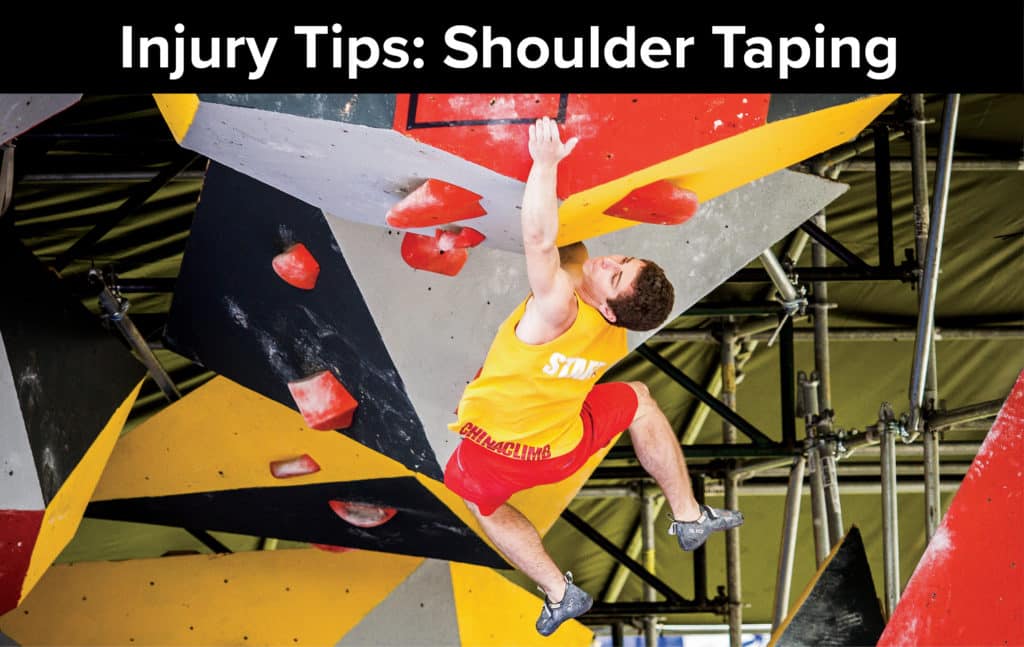
Photo Credit: Jesse Peters
Professional Climber Josh Levin shows you the best way to tape your shoulder back into a better alignment. But remember, the taping is just temporary to align your shoulder blade and decrease pain. Click on this link to learn the best exercises to strengthen your shoulder blade muscles so that you will no longer need the tape.
Shoulder Pain
Shoulder pain often begins with a dull ache and can grow into a sharp, show-stopping pain. For most people with this injury—especially those who try to push through—the pain comes in ebbs and flows, but never seems to fully go away. Below is a taping technique that unloads the shoulder. You can perform tissue unloading for as long as it takes for your pain at rest to subside.
This technique involves using a rigid strap tape called Leukotape. It can also be performed with white athletic tape, but with less effective results.
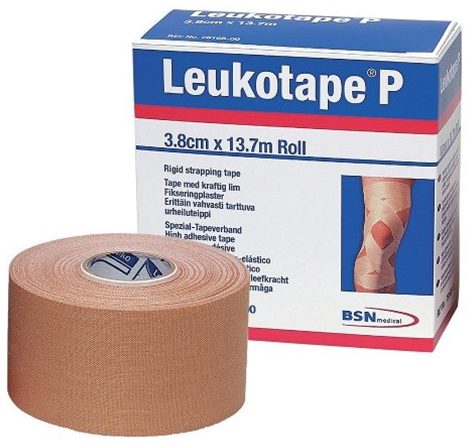
Leukotape lacks breathability and is more expensive than white athletic tape but it is much stronger. Leukotape maintains over 70% of its tension during athletic activities.
A few tips for applying the tape are below:
- Leukotape should never be applied directly to the skin.
- When applying the Leukotape, you must first apply a tape under-wrap called cover-role. This under-wrap protects your skin from the strong adhesive in Leukotape.
- Do not apply the tape over open wounds or fragile skin.
- Remove the tape if you experience discomfort, itchiness, skin irritation, numbness or tingling.
- When applying the tape, make sure to clean the skin well with soap and water. You can also use an alcohol solution.
You can learn more about and buy Leukotape and Cover-Role by clicking here.
Instructions
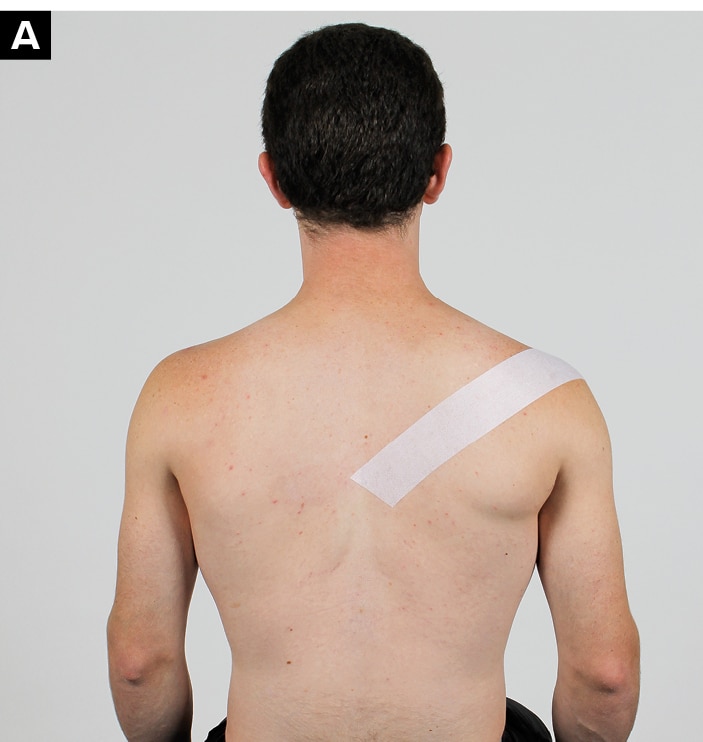
Photo A: Apply cover-roll to the front of the shoulder and wrap it down and around at a 45-degree angle until it reaches the center of the spine.
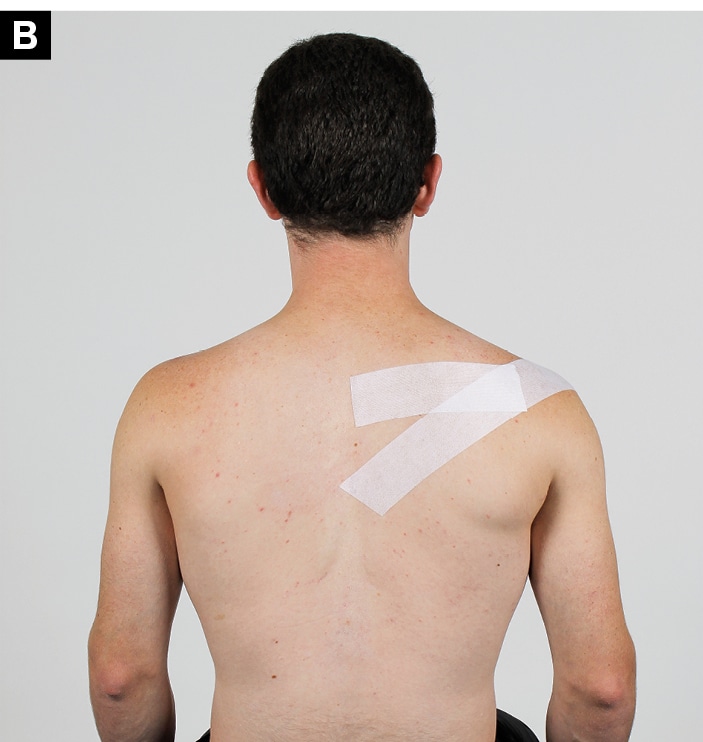
Photo B: Apply a second piece from the midpoint of the tape on the back of the spine towards the middle of the spine.
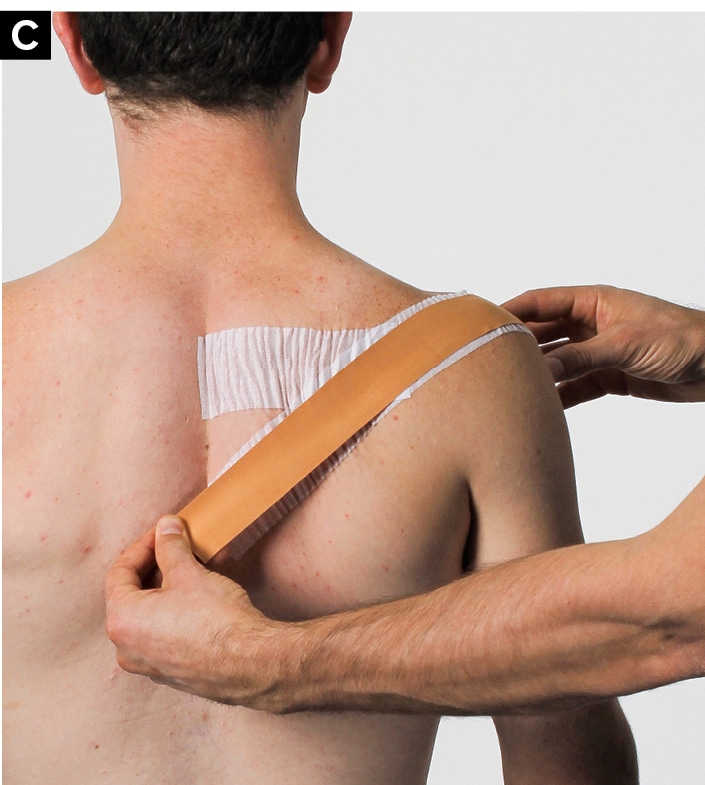
Photo C: The climber squeezes their shoulder blades together. Secure a strip of leukotape to the front of the shoulder along the cover-roll. Pull the tape taut and secure to the middle of the spine.
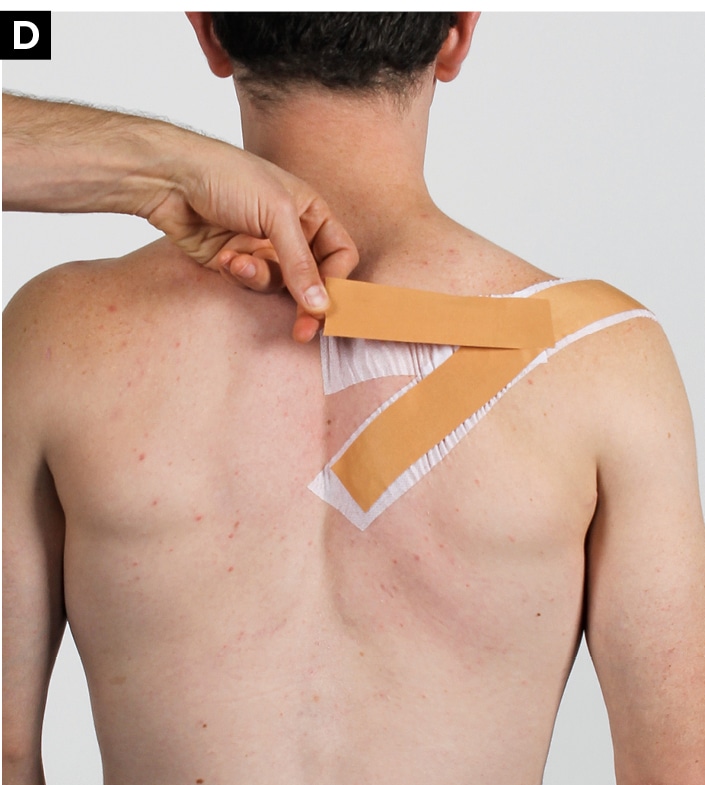
Photo D: Secure a strip of leukotape to the horizontal piece of cover-roll. Pull the tape taut and secure to the middle of the spine. Adjust the tension of the tape as necessary.
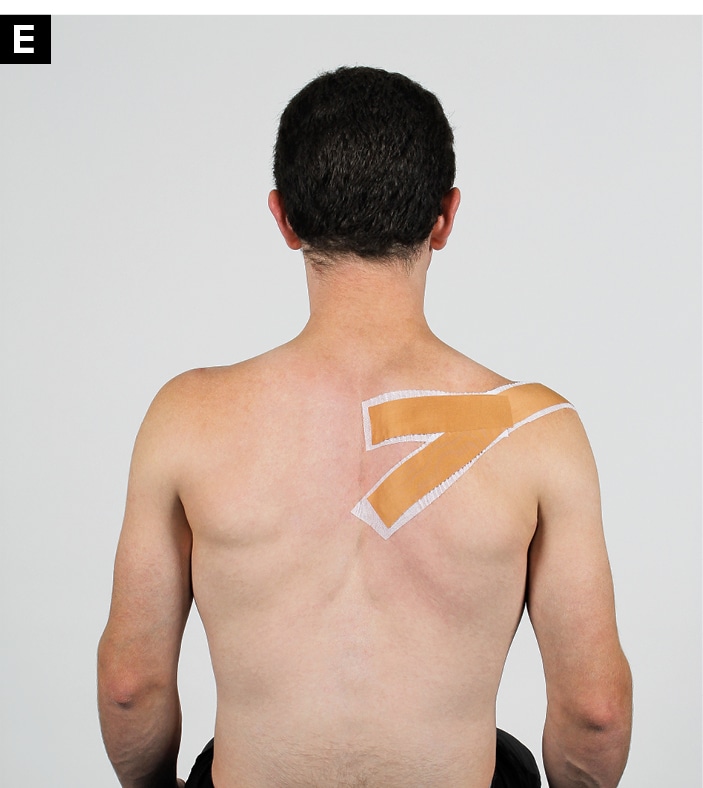
Photo E: The completed tape job.
What It Does
The tape acts just as your muscle would to support the shoulder blade. Securing the shoulder blade in an optimal position allows for quicker healing, less pain and more effective activation of the rotator cuff muscles. The tension of the tape can be adjusted to provide more or less support.
Frequency
Tape as needed. The tape is very rigid and may limit range of motion while climbing. It is for this reason that it is recommended to wear during the day to unload the shoulder and not during climbing.
Shoulder Blade Taping Video
Check out the video below to learn how to perform this tape job to stabilize your shoulder blade and optimize the resting position of your shoulder.
- Disclaimer – The content here is designed for information & education purposes only and the content is not intended for medical advice.




